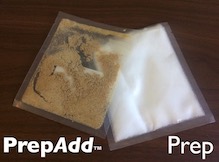|
|
Wood Kiln
Visiting artist/engineer, Alfred University – ceramic department, 2003-2005 was asked to investigate the development of a method to reduce the amount of pollutants being released from the wood burning kilns on campus that exceeded EPA/NYS-DEC air quality standards. Wood fired kilns come in many assorted shapes, sizes and firing attributes, but all require a continuous tending and stoking of wood throughout the process, which lasts from several hours to several days. During this process the “fly ash” from the burning wood is drawn from the firebox into the chamber where the pots sit. This ash settles and eventually fluxes and melts to form a natural ash glaze on the surface of the pottery. To create as much ash as possible a typical stoking occurs every 7-10 minutes. The kiln is typically fired in a reduction atmosphere, which starves the kiln fire of oxygen. The downside is that this causes a release of heavy black smoke (carbon monoxide), particulates, hydrocarbons and release of air contaminates into the atmosphere over the continuous firing process from the chimney flue. Solution covers the method of placing a catalytic combustor (convertor) in the chimney flue to burn the fuel more efficiently and burn-off unwanted contaminate. Exhaust gases can be routed through a catalytic combustor: a ceramic or metallic matrix material that is coated with a metal such as platinum or palladium. Smoke, gases and particles pass through the combustors surfaces and ignite at a much lower temperature (250°C) than they would without the combustor (500°C). The result is that harmful substances are more completely burned. The process is passive, relatively maintenance free and of reasonable costs over an estimated 5-year lifecycle. Preliminary test results reduced particulates by 85-90% during the process and did not effect firing schedule or ash effect on ceramic work. http://www.sururalism.com/brettstern/wp-content/uploads/2010/04/wood_kiln.flv |













